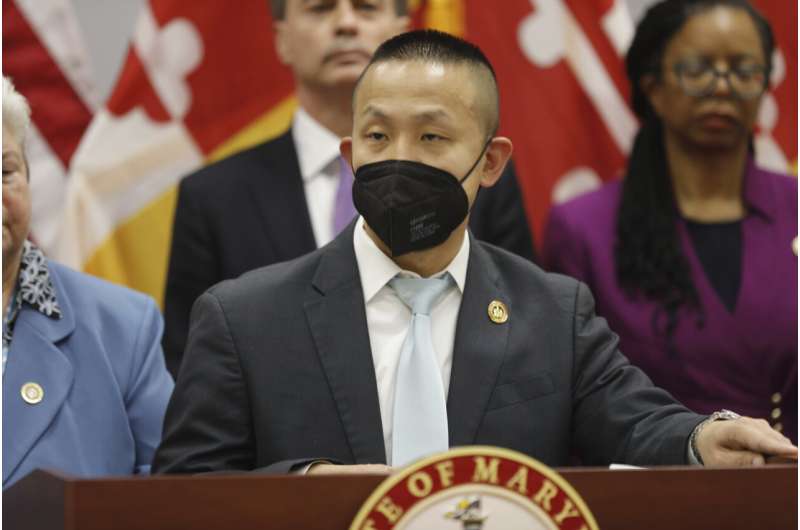
Maryland officials are preparing for as many as 80,000 residents who could no longer qualify for Medicaid coverage this spring, as the federal government reinstates a requirement that existed before the COVID-19 pandemic for states to verify the eligibility of recipients.
Michele Eberle, the executive director of the Maryland Health Benefit Exchange, said that beginning in May, the state can start ending Medicaid coverage for people who no longer qualify. Maryland, she added, is in a better position to reach people than many other states to either continue Medicaid coverage or move them into other health plans.
“We are working through all of those numbers right now, but we believe it’s around 80,000,” Eberle told a panel of lawmakers last month. “There’s different little discrepancies of those numbers. The numbers we’ve come up with is about 80,000 that would roll off, people that we’ll have to make sure we’ve got them covered.”
Medicaid enrollment ballooned during the pandemic, in part because the federal government prohibited states from removing people from the program during the public health emergency once they had enrolled.
The program offers health care coverage to roughly 90 million children and adults—or 1 out of every 4 Americans.
Late last year, Congress told states they could start removing ineligible people in April. Millions of people are expected to lose their coverage, either because they now make too much money to qualify for Medicare or they’ve moved. Many are expected to be eligible for low-cost insurance plans through the Affordable Care Act’s private marketplace or their employer.
“We’ve had the largest number of folks put into Medicaid during this COVID (pandemic),” Eberle told Maryland Senate’s Finance Committee. “We ran a COVID special enrollment period over 2020 and 2021, and our numbers have just skyrocketed in Medicaid, and we don’t want to lose those people, so we’re working very closely with our department of health.”
Maryland will be reaching out to consumers to make sure if they are eligible for Medicaid that their coverage will be renewed. If they are no longer eligible, the state will help get them into qualified health plans, Eberle said. If they age out of Medicaid and are eligible for Medicare, the exchange will help get them on that pathway.
The Maryland Department of Health will be partnering with Maryland Medicaid Managed Care Organizations, the health exchange, the Maryland Department of Human Services and the Chesapeake Regional Information System for our Patients.
“The communications campaign will include paid media, social media messaging, and other advertising and digital campaigns, in addition to targeted outreach by the MCOs,” the health department said in an email.
Eberle said Maryland is in a better position than a lot of states, because of its health care exchange. Maryland has an integrated system between Medicaid and qualified health insurance plans, and the state has not stopped doing redeterminations about qualifications, she said, while other states have not done them for three years.
“We’ve continued to do those redeterminations every single month,” Eberle said. “Now what that means is we didn’t terminate anyone, but we sent them notices. We said if you have a new email address, a new phone, come back, update us, so we’re better off in that we have current information.”
Still, some are concerned by the sheer number of people who could be affected.
State Sen. Clarence Lam, a Howard County Democrat who also is a physician at Johns Hopkins, noted that it’s a huge number of people who could suddenly lose health insurance. He said he believes “the jury is out,” on how the change will be handled.
“We are very concerned,” Lam said in a recent interview. “We made a lot of strides during the pandemic. We don’t want the post-pandemic period to be a period where we see the greatest number of Marylanders thrown off our health insurance rolls.”
Suzanne Schlattman, a consumer healthcare advocate in Maryland, said she has been impressed by the level of collaboration between state agencies to address the matter.
Schlattman, who is the deputy director of development and community outreach for Maryland Citizens’ Health Initiative, said the biggest challenge will be in reaching people who got enrolled in Medicaid for the very first time during the pandemic, which marked a unique period when they did not have to update their information.
Maryland has about 1.7 million people in Medicaid, Schlattman said, the highest number she has seen. In that context, 80,000 doesn’t seem so high, especially compared to what some other states are facing, she said.
“Other states are looking at a much larger shift and a much bigger bottleneck in getting people enrolled,” Schlattman said.
Brian Witte

